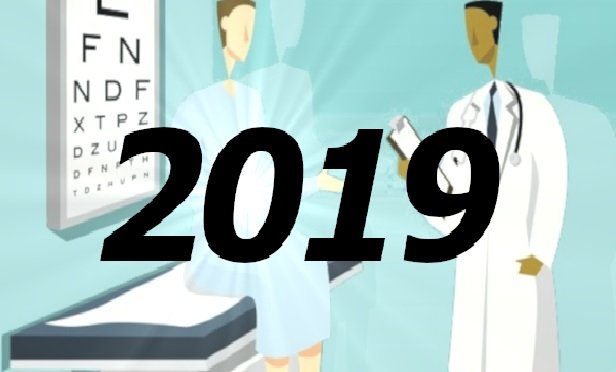 While the responsibility of taxplanning ultimately rests on employees, there are key things thatemployers can do to help them along. (Photo: Shutterstock)
While the responsibility of taxplanning ultimately rests on employees, there are key things thatemployers can do to help them along. (Photo: Shutterstock)
When we say “tax season,” most people's minds jumpimmediately to April—and to, hopefully, a refund check. But if people wait until April tostart assessing their tax health, they've missed out on four monthsof prepping to help maximize their tax profile.
|While the responsibility of tax planning ultimately rests onemployees, there are key things that employers can do to help themalong. Corporate financial wellness doesn't just have to meanemployer-sponsored savings accounts, like 401(k)s, or access topolicies like life and disability insurance.
|Related: Tax refunds mean doctor visits for manyAmericans
|According to PwC, 53 percent of employees are stressed abouttheir finances—and one key way that employers can help is to makesure that their employees are equipped with the knowledge andresources they need to help make good decisions and achieve theirfinancial goals. And when households spend more on taxes than food and clothing combined,implementing a tax management plan could be a major key to gettingemployees on the right track.
|As the calendar ticks over to January and a new year, here areseveral areas HR should communicate around to help promote ahealthy tax outlook for 2019 and beyond:
|Encourage an evaluation of paycheck withholding and W-4election
Very few Americans actually withhold the right amount from theirpaycheck to cover their taxes. According to the Government Accountability Office (GAO), nearly75 percent of taxpayers will have withheld too much in 2018 andwill receive a refund next year—but just over 20 percent, or 30million people, are on track to owe money because they have notwithheld enough. The latter number is higher than last year becauseof the recent Tax Cuts and Jobs Act.
|The IRS expects individuals to meet safe harbor requirements forwithholding, or making estimated payments, to avoid an underpaymentpenalty. If an individual's withholding/estimated payments areprojected to be too low, they may need to be increased to meet thesafe harbor. Adjusting tax prepayments is generally accomplished byadjusting allowances on a W-4 or changing estimated payments thatare made quarterly.
|Employers should provide guidance on when and how (electronic ormail) employees should expect to receive a 2018 tax form for W-2(by January 31, 2019) and 1099-R (by January 31, 2019). Receivingthis form could act as a good opportunity for employees toreevaluate their withholdings and adjust as needed.
|Promote savings in Traditional/Roth 401(k)s
Overall, investing in an IRA may provide a substantial taxbenefit over a regular investment account because participants candefer or completely avoid paying taxes on growth. If your companyprovides a Roth 401(k), make sure you educate plan participants onthe trade-off between Traditional and Roth 401(k)s. Traditional401(k) contributions are typically pre-tax today and taxable inretirement while Roth 401(k) contributions are after-tax today andare tax-free in retirement.
|Educate participants on the benefits of maxing out savings in401(k)s and other tax-advantaged accounts
While not all financial planners believe you should encouragemaxing out your 401(k) savings, participants who do are allowed towrite them off of their income come tax time. Make sure youremployees are fully educated on the positives and negatives ofwithdrawing from their 401(k) pre-retirement.
|Remind employees that it's not too late: they can still makeone change to their 2018 taxes
While taxes are typically governed by money moves made duringthe calendar year, there is one exception: IRA contributions. Ifemployees have not maxed out their IRA contributions for 2018, theycan still contribute toward that cap up until the IRS tax filingdate, which this year is April 15, 2019.
|Taxes are among the largest expenses your employees willface—and if your employees aren't aware of some of the ways thatthey can optimize their tax profile, they will likely be puttingless money toward retirement accounts and other investments fortheir future. A small investment now in your employees' financialhealth can pay off in the long run—to the advantage ofeveryone.
Read more:
- Year-end tax action: Boost retirement savings tomaximize 199A deduction
- 10 new 2019 tax numbers to know
- 9 ways to save on taxes inretirement
Eric Bronnenkant is head of tax forBetterment.
Complete your profile to continue reading and get FREE access to BenefitsPRO, part of your ALM digital membership.
Your access to unlimited BenefitsPRO content isn’t changing.
Once you are an ALM digital member, you’ll receive:
- Critical BenefitsPRO information including cutting edge post-reform success strategies, access to educational webcasts and videos, resources from industry leaders, and informative Newsletters.
- Exclusive discounts on ALM, BenefitsPRO magazine and BenefitsPRO.com events
- Access to other award-winning ALM websites including ThinkAdvisor.com and Law.com
Already have an account? Sign In






